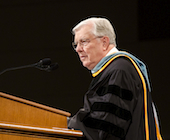Podcast: Download (37.1MB)
Subscribe: RSS
Evangelical Questions: Obedient in Everything
by Jennifer Roach, MDiv, LMHC
Welcome back to Come Follow Me with FAIR: Faithful Answers to New Testament Questions. My name is Jennifer Roach and today we’re going to talk about obedience. As you know we’re going through the Come Follow Me readings and addressing common questions that Evangelicals ask about our faith as we go along. Our purpose here is not to fuel debate but to help you understand where your Evangelical friends and family are coming from so that you can have better conversations with them, and perhaps even be able to offer them a bit of our faith in a way they can understand. [Read more…] about Come, Follow Me with FAIR: Faithful Answers to New Testament Questions – 2 Corinthians 1–7

